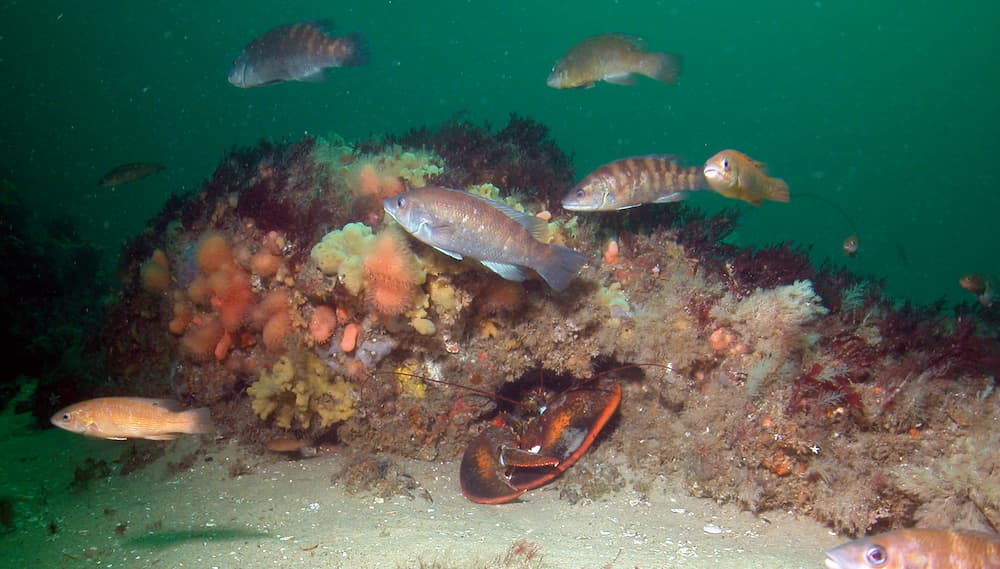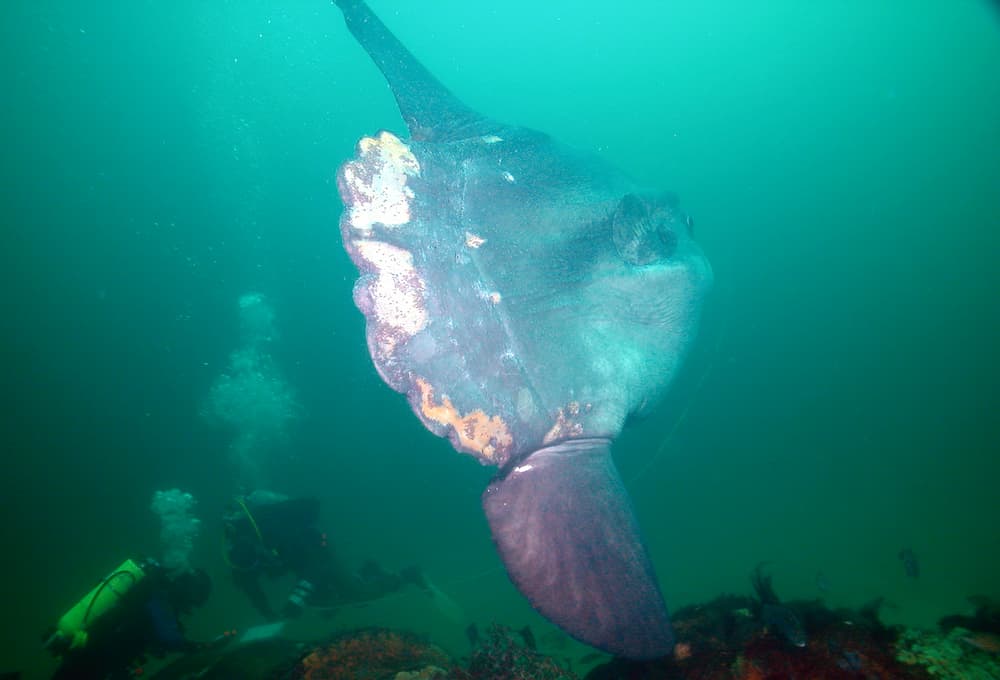
Dive sites differ in terms of what marine life communities are represented. In the sand and gravel areas on top of Stellwagen Bank you are likely to see marine invertebrates such as sponges, tunicates, and anemones. Mussels, clams, scallops, moon snails, sand dollars, and whelks are also common. Fish life includes sculpins, skates, flounders, goosefish, and cod. Schools of dogfish, herring, pollock and sand lance make dives on top of the bank particularly exciting.
When diving on the rocky ridges and boulder fields, you will encounter a greater variety and density of encrusting invertebrates, often spectacularly colored. Look under boulders and in crevices for wolffish or ocean pout or lobsters. Many of the fishes seen in the sand and gravel areas also frequent boulder and rocky areas. Shipwreck sites also attract a wide array of fish and attached invertebrates.
While ascending and descending, keep a lookout for blue sharks, basking sharks, bluefin tuna, and ocean sunfish, as well as several varieties of jellyfish. Once back on the boat warming up after your dive, look for humpback, minke or fin whales. Remember, intentionally diving with whales is considered harassment and against the law, plus it can be dangerous. Please do not get into the water if whales are present.
